
If you opened this with thoughts of Fokker Scourge and Pour le Merites and Immelmann turns and such, something may be starting to strike you a bit strange, oddly out of proportion, about the aeroplane displayed, which indeed lacks a gun. For this is not an armed Eindekker, but a Fokker A.II, the long-span version of the Fokker M.5 in military service. Strictly speaking, it is not the sire but the uncle of the armed monoplanes, which were direct descendants of the short-span M.5, but without it, the armed Fokker monoplanes would never have appeared at all. For the long-span M.5 was the design which saved Herr Fokker's aviation concern from failure and impending bankruptcy.

By 1913, Fokker's trade-mark Spinne design was on its last legs. Its primitive means of control made it daily more unsuitable as a school machine, and less attractive to a sporting gentleman of means in the market for a flying machine of his own. An attempt to modernize it, and a new pseudo-Taube design, proved extremely poor flying machines. Herr Fokker knew he had to strike out in a new direction, one with an aura of modernity and a promise of prestigious achievement. He made a close study of products of Morane-Saulnier, a leading producer of racing aeroplanes. Fokker designed a machine which strongly reflected the lines of a Morane-Saulnier, but differed greatly in its construction. That design was the M.5 monoplane.
The fuselage of the M.5 replaced wood with welded steel tube, achieving similar strength with less weight. That saving went into making a stronger wing, and both its airfoil section, and the action of its warp-control, were improved over the original Morane patterns. Fokker projected the design to be built in two forms. One, with a longer wing span and so a lighter wing loading, would be apt for aerobatics, and safer for the gentleman pilot to fly; the other, with a shorter wing span, and so less drag and weight, would have a better turn of speed, and be suitable for use as a racer.
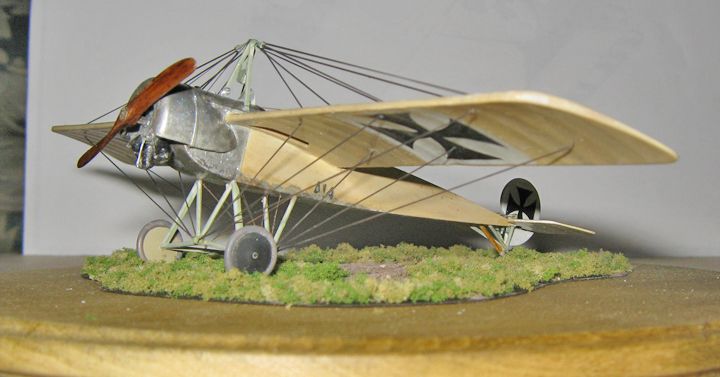
In the spring of 1914, Herr Fokker himself began to put on aerobatic displays flying his new long wing M.5 machine, and achieved a sensation in German aviation circles. In the audience for one display at the end of May were several leading lights of the General Staff, who were sufficiently impressed that Fokker was once again in the running for army aeroplane contracts. The M.5 itself, however, with its poor downward visibility and offering such cramped accommodation for two men, was not considered particularly suitable for observation use.
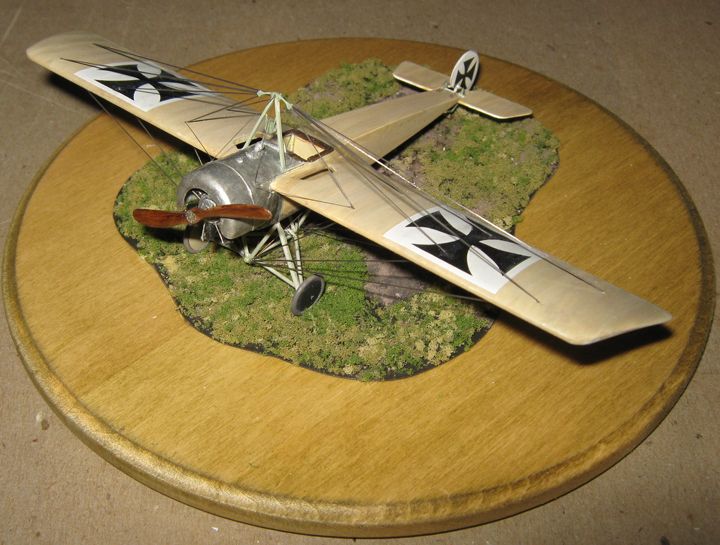
When the Great War commenced, Fokker received orders for many aeroplanes, which he did not have facilities to construct in a timely fashion. The German army wanted a version of Fokker's monoplane offering better visibility and accommodations for two men; this, the M.8, went into production off the drawing board, as the A.I. A few M.5s in civilian hands were impressed, or donated, into military service, and a handful were built under contract in 1914, receiving the designation A.II. In January of 1915, a more substantial contract for long span M.5s was let (for just how many is unclear, it was at least 15, and possibly as many as two dozen). These were being delivered by late February, with one of the first coming down intact shortly afterwards in French territory.
This build was inspired by this photograph:
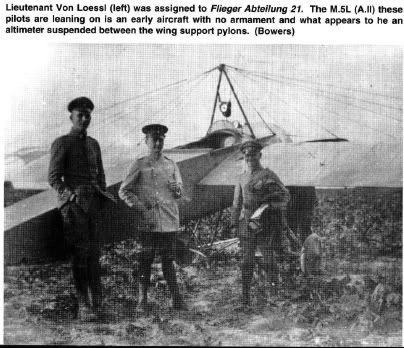
It shows a machine from the latter portion of the 1915 contract, as can be discerned from the reduced angle of attack of the wing, relative to earlier examples. Late production machines typically had a smaller portion of the nose panelled in aluminum as well.
Feldfliegerabteilung 21 was attached to X Corps, part of 11th Army. This was shifted from Flanders to the east in April, 1915, to take part in the Gorlice offensive commenced in May. This produced a breakthrough, and an advance of a hundred miles into Galicia during the summer, retaking Lvov, and forcing the Russians to withdraw from Poland by September. In such a fluid situation, amid a country poorly served by roads and poorly mapped, fast aeroplanes would prove invaluable for liaison and scouting.
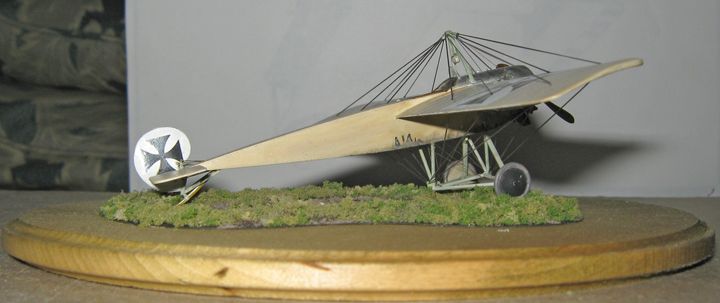
The serial of the machine in the photograph cannot be discerned, so the most I can say is that this model represents the FFA 21 example. Fokkers with Oberursel rotaries notoriously became badly oil stained, and the hot oil generally 'ate' the paint of serials (as well as the varnish on the fabric), and so I was careful to put on oil stains in a typical pattern down the lower longerons, then laid on decals for a conjectural A14/15 serial, and scraped them away where they overlapped onto the oil stains.
This is a conversion, employing two Eduard 1/72 scale Fokker E.III kits. Main points are: increasing wing span by two rib spaces, trimming chord and rake of tips, and putting cut-outs in the wing roots; shortening the fuselage slightly, extending the cockpit opening, altering the curve at the underside of the nose, and the shape of the cheek-pieces; reducing the span of the elevators by one rib space each. A seven cylinder motor must be swapped in for the nine cylinder one in the kits, and a taller cabane mast must be constructed.
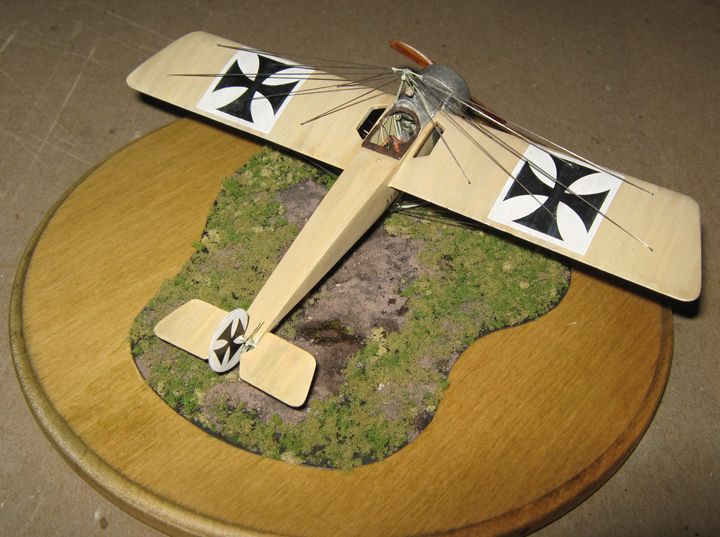
Course of the build may be followed from here:
http://www.network54.com/Forum/644810/thread/1375539842/Fokker+A.II+%28conversion+from+Eduard+Fok.+E.III%29+---+Revived+W.I.P.+%285%29